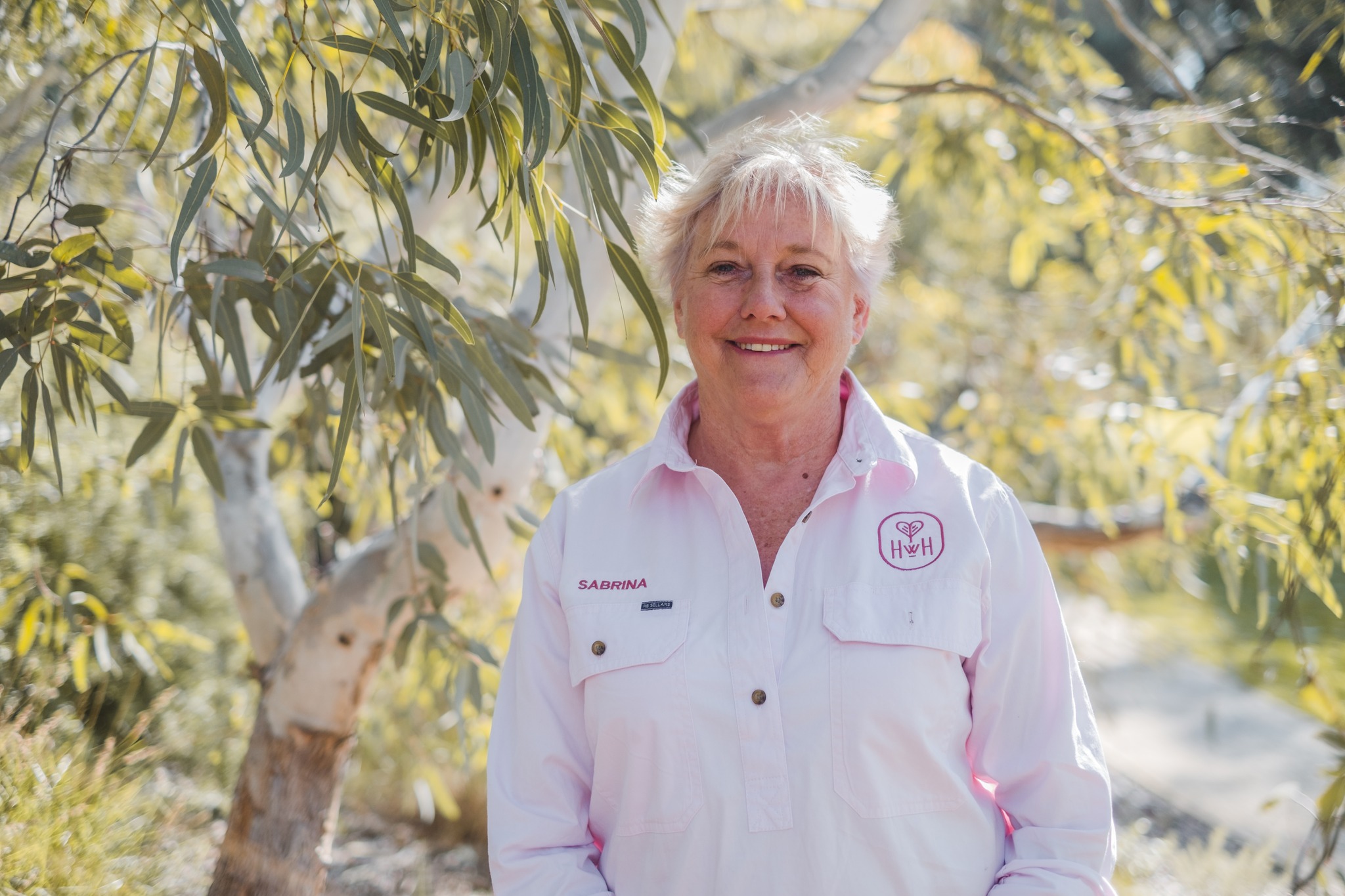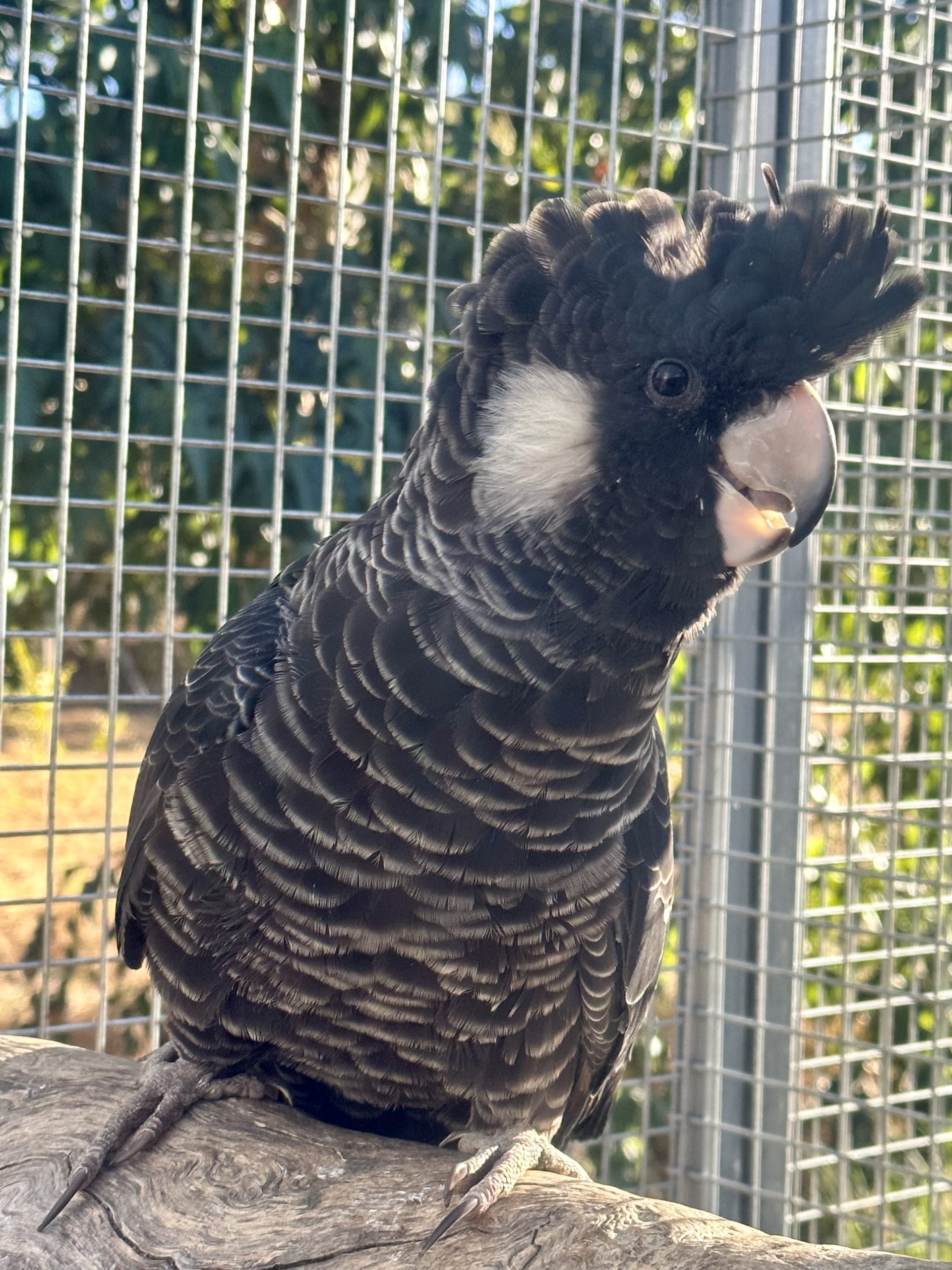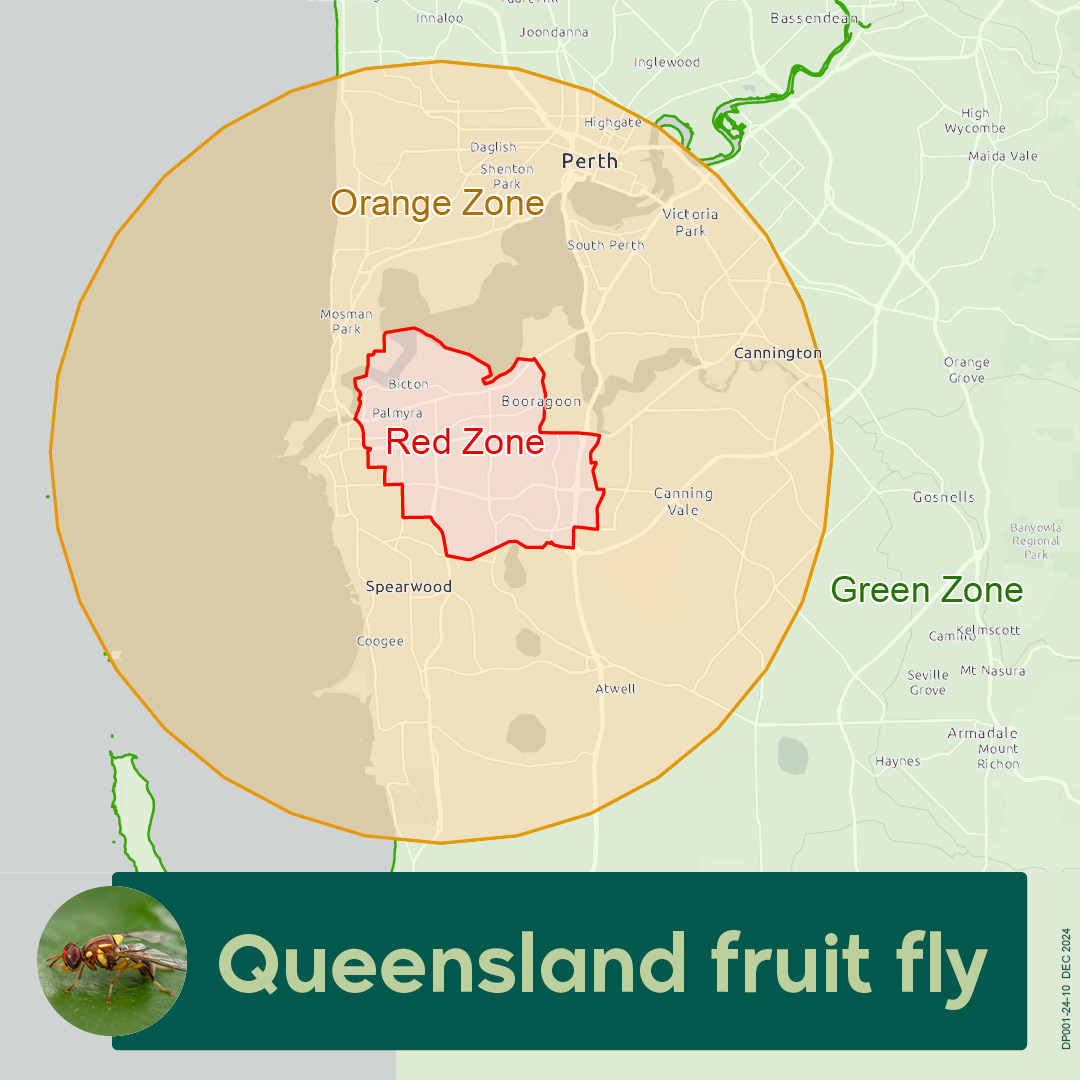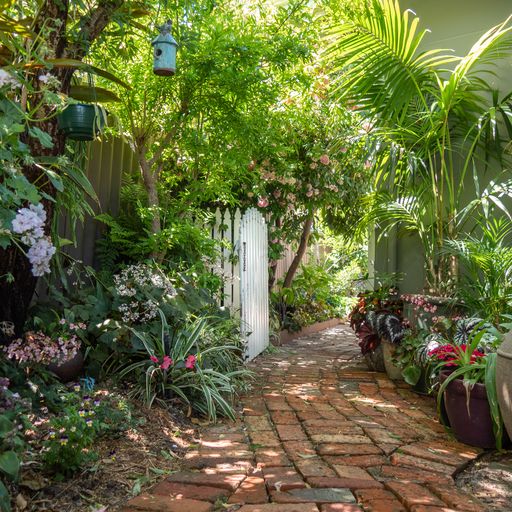Second round Qfly control for Southern Suburbs
Southern suburbs residents in the Queensland fruit fly (Qfly) red zone are encouraged to monitor their gardens and remove any new fruit immediately to aid the ongoing biosecurity response to get rid of this nasty pest.
The Department of Primary Industries and Regional Development (DPIRD) is working closely with the community and local government to eradicate Qfly, which attacks more than 300 species of fruit and fruiting vegetables.
It is our responsibility to all get on board with this not only to protect our commercial fruit growers but allow us to grow fruit Qfly free in the future.
DPIRD Chief Plant Biosecurity Officer Vincent Lanoiselet thanked the community in the southern suburbs for supporting the department’s efforts.
“We are very grateful to residents for doing the right thing and following the movement directions and removing fruit to help stem the spread of Qfly,” Dr Lanoiselet said.
Gardeners in the red zone will need to continue to watch fruit trees, such as figs, and fruiting vegetables, like tomatoes and capsicums, for new fruit and to remove it immediately to help stop the Qfly breeding cycle.
The fruit needs to be solarised – place it in a black plastic bag and leave it on paving in the full sun for 7 days before putting it in the red bin. If you can cook it or freeze it that’s another option. I pickled all my chilies and learnt a new skill.
“The community’s help is essential to support DPIRD’s surveillance and treatment efforts and a speedy eradication program.”
Local government has been very supportive of the Qfly biosecurity response, with some councils providing additional waste disposal options and facilities.
Ongoing DPIRD pop-up information stalls in the red zone have experts on hand to advise on movement requirements and fruit disposal options, such as cooking, freezing and solarising.
“Biosecurity is everyone’s business and we all have a role to play in keeping WA free from pests and diseases – like Qfly – that threaten home gardens, farmers’ crops and livelihoods, the environment and crucial market access,” he said.
If we all do our bit (and a bit of cooking) in quarantine areas we should be able to eradicate this irksome pest and get on with having toast and ripe tomatoes and avocado.
For more information on the Qfly Quarantine Area requirements, including an interactive map to determine if you are in the red or orange zones, visit the DPIRD website https://www.wa.gov.au/qfly.
Top Tip
Chilies can be harvested small and unripe, they will still have the kick, and are easy to pickle in vinegar and sugar.
Qfly Second Stripping QA reminder DPIRD media release 4 Feb 2024 (A13580757)



